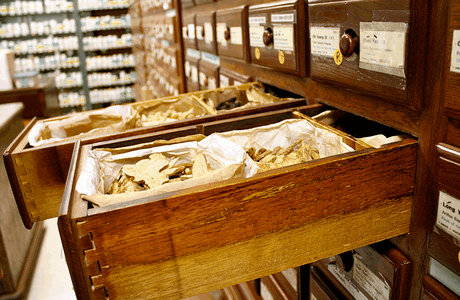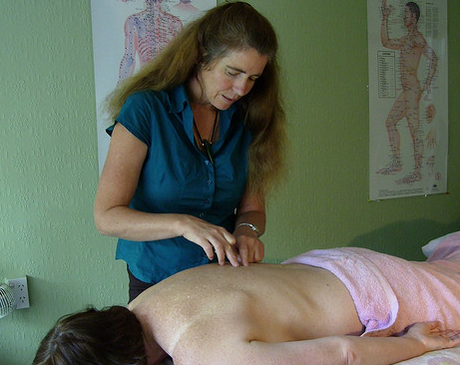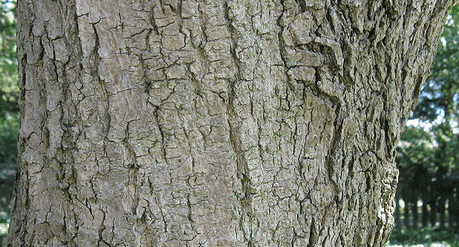Traditional Chinese Medicines
Chinese Traditional Medicines and Osteoporosis
There has recently been a research paper (doi 10.1155/2012/752837) published by Shih, Yang and Chen from the Department for Traditional Chinese Medicine and the Department of public health in Taiwan that looks into the implications of the use of traditional Chinese medications for the treatments of osteoporosis.

As many of the western traditional osteoporosis drugs have known side effects, the use of traditional Asian methods and medicines for use as alternative treatments for osteoporosis is of great interest. Traditional Chinese medicine itself covers a large array of topics. In addition to traditional herbal remedies, other treatments that come under its umbrella include acupuncture and traumatology therapy. Although it is common practice for physicians who practice traditional Chinese medicine to give out herbal products for use as osteoporosis treatment options, the characterization of the patterns of prescription and their effects have not been fully characterized. For this reason, Shih and colleagues carried out a cohort study in over one million records hold in the Taiwan NHIR database to look at the association between the use of traditional Chinese medicines and osteoporosis. In all they looked into the records of over sixteen thousand people who had been prescribed traditional treatments.
A Little Background on Osteoporosis
Although there is plenty of information on the osteoporosis and osteopenia conditions contained on this site. I would like to give a bit of a reminder about the topic. Osteoporosis is a condition that is signified by a person having low bone mass with an altered microarchitectural structure. This can lead to many problems, the biggest of which are broken bones, and the lack of mobility this leads to, and indeed the increased risk of morbidity that is associated with the condition. Although the condition largely affects women, there is a significant number of osteoporosis in men who are impacted by weakened bones; there is also a strong correlation between the condition and age, lack of certain minerals such as calcium and magnesium, in the diet, and lack of weight bearing exercises such as walking. The condition is known as the silent disease — this is largely because people do not realize that they have thinning bones unless they have been diagnosed it upon fracturing a bone, or through the use of a bone mineral density test. Unfortunately, as many people do not realize that they are developing thinning bones they do not take heed of the preventative information that is pushed out by the medical communities. It is well documented that following a diet rich in certain minerals, and performing weight-bearing exercises can have major preventative effects on the condition for the majority, but not all people.
A little background on Chinese Traditional Medicine
In China, Taiwan and many other countries (though largely not to the same extent) traditional medicines are prescribed alongside, or as an alternative to the medicines that are produced by modern pharmaceutical companies. Some of the major classes of treatments that are often prescribed by traditional medicine practitioners include acupuncture, decoctions and traumatological manipulative therapies.

Decoction is a method of extracting the flavor/compounds out of a substance by boiling, and it is this method that is used for many Chinese herbal products used for ‘traditional’ medicinal purposes in the modern age. These decoctions generally produced from herbal plant materials; the process allows for the extraction of volatile organic and oils.
As there is such a strong tradition of these alternative and traditional practices in countries such as Taiwan, it is no surprise that their use is widespread by the population; indeed, in Taiwan the prescription of herbal products for the treatment of conditions such as osteoporosis is fully supported by the government and reimbursable under National Health Insurance rules. Because of this it is common practice for traditional practitioners to prescribe herbal products in large amounts. In general the products themselves are of high quality —this is largely a result of the fact that the costs of the products will be covered by the health insurance. Prescriptions, usually many different formulaic herbal medicines, which are often taken in combination with one or more single herb preparations.
As these traditional medications are commonly prescribed in the treatment of osteoporosis, it is of great interest to investigate the amount of use and the effects that they convey onto the population. Taiwan is fortunate in that it has a large database, the NHIRD. This database, carries information on people who receive treatment under Taiwan’s National health system, and carries over a million records. This makes it a great tool for use in cohort studies, and its prior use has led to many interesting findings such as the link between green tea and the prevention of many diseases. Shih and colleagues were able to make use of the information contained in the database to analyze traditional herbal medications that were given to osteopenia and osteoporosis sufferers.
The Cohort study into osteoporosis and Traditional Chinese Medications
The research analyzed data on over one million patients over a seven year period. This enabled the identification of over 16,000 people who had visited hospitals as an outpatient over six times to be treated for osteoporosis. Of these, approximately four out of every five were women, and over 70% of all the patients had tried the use of traditional therapies at least once. Further to this, just over 4,000 of the patients had been hospitalized at some point as a result of a fracture; the commonest type of fracture were Femoral neck fractures —2.7% of all women, and 0.6% of men suffered from this condition.
The age related results were interesting. In women over 65, 16.7% were reported to have osteoporosis; in middle-aged women between the ages of 45 to 65, the prevalence rate was 5.8%. As to be expected with a disease that has an age related component, there was a large drop of prevalence in women under the age of 45 — only 571 women (~0.2%) suffered from osteoporosis in this age range. The prevalence of osteoporosis in men was much lower at 4.7%, 0.8% and 0.1% respectively for the three age ranges mentioned above.
Over the years many traditional/alternative medicine Chinese drug formulae that have been developed for the treatment of osteoporosis. The main brands prescribed were Du Huo Ji Sheng Tang; Zuo Gui Wan; Shu Jing Huo Xie Tang and Jia Wei Yao San; these represented 21.4%; 17.4%; 14.4% and 12.2% respectively. Of the single herbal treatments Cortex Eucommiae, Radix Dipsaci and Radix Salvia Miltiorrhizae were the most popular (18.4%; 13.5%; 11.5%).
It was also common to prescribe combinations of herbal formulas together, such as the combinations of Du Huo Ji Sheng Tang and Cortex Eucommiae/Radix Dipsaci or Radix Achyranthis Bidentatae; and Zuo Gui Wan alongside Rhizoma Corydalis or Radix Dipsaci.
What and Why are these Traditional Chinese Medicines Used For in the Treatment of Osteoporosis?
One of the most prescribed alternative medicine for osteoporosis herbal drugs used was Du Huo Ji Sheng Tang. This is used in traditional Chinese medicine to treat disharmonies that are a cause of the cold, wind, and dampness. In osteoporosis sufferers, this drug is therefore used to treat stiffness, knee pain, flaccid muscle, and abhorrence of the cold. Studies on the use of this herbal formula in people suffering from osteoarthritis has been shown to be very effective at relieving stiffness and pain in the knees. In a short-term (four week) study into the effectiveness of this drug there were no noticeable side effects associated with its use. Du Huo Ji Sheng Tang was commonly used in combination with Zuo-Gui-Wan (used to prevent dizziness, and weakness in the knee injuries). The combination of these herb osteoporosis drugs were used to combat soreness that occurred in the lower back regions of patients.
Another major herb used for treatment was Shu Jing Huo Xie Tang; this is used to relieve muscle pain and arthralgia; and acts through improving the circulation of the blood. The other major formula used was Jia Wei Xiao Yao San; this is often used to treat symptoms associated with the menopause such as hot flashes and insomnia.
The two main herbs used as natural remedies for osteoporosis were Du Zhong and Xu Duan; the former is associated with the strengthening of bones and muscles — it is used to treat chronic pain that occurs in the lower back and in the knees. The latter, Xu Duan, is used in the treatment of inflammation, lower back pain, and to promote collagen synthesis.

Many herbs have been traditionally used as pairs in Chinese medicine. This is mainly to increase effectiveness and to compensate for areas where the use of single Chinese herbs will not be very effective. As Du Zhong and Xu Duan are similar in the nature of their effect, they are often used in combination with each other in order to increase their efficiency in the treatment of the both the muscle and skeletal systems.
The authors discuss the limitations of their study. One of which is that patients may buy herbal medicines outside of the Taiwanese National insurance system. Many of these herbal treatments are quite cheap, and it is easier to just buy them from a shop, rather than going through the process of getting money back through filling in a multitude of forms. The authors do mention that this is not likely to have a major impact on their findings because all of the types of traditional medication are covered by the insurance programs. Therefore the proportion of use, and combination of formulae are likely to be similar; and overall use is only expected to be slightly higher than reported.
Closing Thoughts on the Treatment of Osteoporosis by Chinese Herbal Products
It is interesting to see how traditional Chinese drugs can be used in the treatment of osteoporosis. Many of these medications seem to be scorned upon in Western culture, yet many are proven to be effective in limiting both pain and inflammation. Whether any of these treatments actually have an impact on reversing effects of osteoporosis remains to be seen, but is probably unlikely as most of the herbal use seems more aimed at limiting pain, increasing blood flow, and reducing inflammation rather than the strengthening of bones. Nonetheless, many of the modern pharmaceuticals used in Western medications contain the biologically active components of herbs that have been traditionally used to treat ailments. Many of these come from European/American traditional herbal use, and there is much ongoing research into the effects of traditional chinese herbs for osteoporosis and the isolation of the key molecules that are responsible for their effectiveness in treating conditions such as inflammation. It is very interesting to have an overview of the types of herbal remedies that are used within Taiwan, and it will be of great interest to analyze the results that these treatments have on the relief of osteoporosis pain on a more individual level. It may turn out that some of these herbal formulae will be ideal to use alongside western medications.